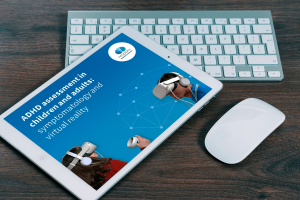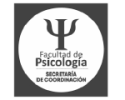Around 280 million people worldwide suffer from depression. In adults, the incidence rate is 5%, and in adults over 60 years old, it’s 5.7% (WHO). Clinical depression is, therefore, a common disorder. Its consequences can be highly debilitating, it can be caused by other health issues, and it has a close relationship with ADHD. We delve into what depression is and its symptoms, the characteristics of a depressed brain, its link with ADHD, and how to diagnose it.
What is depression?
Depression is a persistent feeling of sadness, a sense of worthlessness, decreased interest in once-pleasurable activities, and a lack of hope. Naturally, all of this affects a person’s daily life, making it considered a mood disorder with consequences on one’s functionality. Clinical depression affects the ability to think and reason, and it impacts attention span, memory, and even executive functions.
The terms «depression» and «feeling depressed» have become popularized and are frequently used to describe a passing emotion or even a depressive episode, but clinical depression encompasses some or all of the aforementioned symptoms over a prolonged period.
Clinical depression can be classified as mild, moderate, or severe depending on both the number and intensity of symptoms and/or the consequences they have on a person’s functioning and daily life. In the case of mild depression but with a long duration, we would then refer to it as dysthymia.
Some of the most common symptoms that appear in a person with clinical depression are:
- Low concentration
- Poor short-term memory
- Low self-esteem
- Very little hope or optimism for the future
- Sleep and appetite disturbances
- Negative thoughts, or even catastrophic ones
- A feeling of acute fatigue or lack of energy
What happens inside a depressed brain?
Inflammation, amygdala disconnection or uncoupling and reduction in hippocampal size. These three aspects represent the primary distinctions observed when comparing a healthy brain to that of an individual with clinical depression.
Inflammation arises from the circulation of cytokines, molecules capable of damaging synapses (thus affecting monoamine availability) and inducing oxidative stress in nerve cells. It’s estimated that a brain experiencing depression may exhibit up to 30% more inflammation, contributing to symptoms such as fatigue or disruptions in sleep and appetite patterns.
The amygdala, responsible for processing emotions, displays a disconnection within the emotional network in a brain affected by clinical depression. Consequently, individuals may perceive everything as neutral or negative. Meanwhile, the hippocampus, vital for memory and emotional processing, undergoes a reduction in neurogenesis due to inflammation, resulting in diminished connections. In essence, inflammation directly leads to a decrease in the generation of new neurons, thereby causing hippocampal shrinkage. Some studies also suggest a similar decline in the amygdala and prefrontal cortex, albeit to a lesser extent than the hippocampus.
How is Depression Diagnosed?
Depression diagnosis primarily hinges on symptomatology, conducted through a clinical interview and assimilating patient and environmental data. Often, this interview is supplemented with tests or questionnaires to establish a benchmark for future comparisons and individual progress assessment.
Key inquiries to diagnose clinical depression revolve around prevalent thoughts and emotions, symptom duration, mood impact on functionality, and changes in sleep or eating patterns. Typically, a depressive episode is identified when at least five symptoms from the comprehensive list persist throughout the day for a minimum of two weeks.
While we’ve discussed the distinctive features of a brain affected by clinical depression, currently, neuroimaging techniques haven’t provided a means to diagnose depression due to various limitations. Among them, the absence of comprehensive brain neuroimaging history for each patient hinders the detection of significant changes.
| Considering depression’s symptoms involve cognitive process disturbances, attention deficits, memory issues, and executive function impairments, leveraging virtual reality assessment could offer a thorough and precise evaluation. Tools like Aquarium for attention assessment, Suite for memory evaluation, and Ice Cream for executive function assessment can contribute significantly. |
What is the link between ADHD and depression?
ADHD is a condition that hampers concentration. Depression commonly manifests as an inability to perform tasks that were once considered easy. Both disorders impact average functionality and, consequently, often affect self-esteem and self-concept. It’s quite common to observe how both disorders (separately or combined) lead to somatizations and changes in daily patterns. It’s important to note that not all individuals with attentional processing issues have ADHD (with hyperactivity); there are many cases of ADHD that lack that extra energy and restlessness. So, what is the relationship between ADHD and depression, and how can they be differentiated?
In diagnosed children with ADHD, depression is estimated to have a high incidence.
In children with ADHD, depression symptoms have been reported between 14.7% and 75%, depending on the epidemiological or clinical study. The academic and social challenges experienced by children with ADHD can lead to symptoms of helplessness (excessive worry about specific events, separation anxiety, social phobia…) that negatively impact the perception of personal competence.
| The similarity of some symptoms of both disorders often leads to them being overlooked or confused. If the patient’s intervention isn’t entirely correct and includes pharmacological treatment, the side effects of the treatment combined with the symptoms may make differentiation even more challenging. Hence, it’s crucial to assess and monitor attentional processes, memory, and executive functions. This will allow for a clearer identification of the indicators and how they evolve over time, ensuring precise and individualized intervention. |
ADHD Comorbidities
It’s uncommon to see clear ADHD without other associated disorders. According to Additude, «ADHD rarely travels alone. A significant number of people with ADHD have a comorbid or associated disorder, whether that’s depression, bipolar disorder, obsessive-compulsive disorder, binge eating disorder, a substance abuse disorder, or a learning disability. Certainly, ADHD plus something else can also set someone at more risk for depression. An individual with ADHD and OCD, for example, has to work through a tough combination of conditions — they may be constantly feeling tormented in their heads and ruminating about many different things that can lead them to shut down and feel helpless.»
These are ADHD’s most common comorbidities:
- Anxiety: individuals with ADHD frequently experience heightened levels of worry, fear, or restlessness, exacerbating daily challenges.
- Depression: managing ADHD complexities can trigger feelings of sadness and hopelessness, leading to depressive symptoms.
- Learning challenges: despite average or above-average intelligence, ADHD often intersects with learning disabilities, impacting academic performance.
- Oppositional and conduct issues: behavioral difficulties associated with ADHD can manifest as oppositional or defiant behaviors, presenting additional obstacles.
- Autism Spectrum: ADHD commonly coexists with traits of autism spectrum disorder, resulting in unique social and communication challenges.
- Sleep issues: impulsivity and focus difficulties can disrupt sleep patterns, further impacting daily functioning.
- Bipolar tendencies: overlapping with bipolar disorder, ADHD intensifies mood swings and emotional instability, necessitating comprehensive management strategies.
Please keep in mind that it is of the utmost importance for a qualified professional to diagnose either of the two disorders we are discussing, both depression and ADHD.
You might also find this interesting…
FREE E-BOOK:
ADHD assessment in children and adults: symptomatology and evaluation with VR
Are you a professional already taking advantage of virtual reality as part of your treatment?
Optimize your assessments as well and… join the professionals who are at the forefront of Neuroscience!
You can also write to customers@nesplora.com and we will contact you.
Follow us on Facebook, Twitter, Instagram, LinkedIn & YouTube for more content on neuropsychology, virtual reality and clinical practice, cognitive processes, education and mental health.












